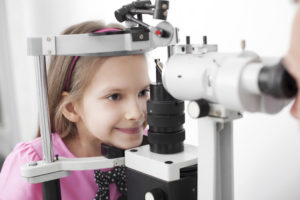April 1, 2022
By Dwight Akerman, OD, MBA, FAAO, FBCLA, FIACLE

Traditional myopia management (TMM) provides single-vision optical correction of a person’s full refractive error throughout childhood and beyond, responding to progression and complications as they occur. An array of active myopia management (AMM) options is also available, which provide clinically meaningful treatment efficacy, including topical low-dose atropine, novel spectacle designs, dual focus/multifocal soft contact lenses, and orthokeratology GP lenses. AMM options have implementation costs in childhood, whereas savings from lower myopia are likely later in life.
Fricke et al. compared estimated lifetime societal costs between TMM and AMM options for an 8-year-old child who presents with −0.75D myopia in both eyes. Estimates were completed for the ethnic majority, urban dwellers in Australia and China, which provided contrasting myopia and health system situations.
Low-dose atropine, antimyopia spectacles, antimyopia multifocal soft contact lenses, and orthokeratology met the AMM inclusion criteria. Lifetime cost for TMM with 3% discounting was US$7,437 (CI US$4,953 to US$10,740) in Australia and US$8,006 (CI US$3026 to US$13,707) in China. The lowest lifetime cost options with 3% discounting were antimyopia spectacles (US$7,280, CI US$5,246 to US$9,888) in Australia and low-dose atropine (US$4,453, CI US$2,136 to US$9,115) in China.
The researchers conclude that the financial investment in AMM during childhood may be balanced or exceeded across a lifetime by reduced refractive progression, simpler spectacle/contact lenses, and reduced risk of pathology and vision loss. The researchers’ methodology can be applied to myopia of any amount, at any age, in any place and ethnicity, and can be updated for new costs or new AMM options as they become available.
Abstract
Establishing a Method to Estimate the Effect of Antimyopia Management Options on Lifetime Cost of Myopia
Tim R Fricke, Padmaja Sankaridurg, Thomas Naduvilath, Serge Resnikoff, Nina Tahhan, Mingguang He, Kevin D Frick
Background: Informed decisions on myopia management require an understanding of financial impact. We describe a methodology for estimating lifetime myopia costs, with comparison across management options, using exemplars in Australia and China.
Methods: We demonstrate a process for modeling lifetime costs of traditional myopia management (TMM=full, single-vision correction) and active myopia management (AMM) options with clinically meaningful treatment efficacy. Evidence-based, location-specific, and ethnicity-specific progression data determined the likelihood of all possible refractive outcomes. Myopia care costs were collected from published sources and key informants. Refractive and ocular health decisions were based on standard clinical protocols that responded to the speed of progression, level of myopia, and associated risks of pathology and vision impairment. We used the progressions, costs, protocols, and risks to estimate and compare the lifetime cost of myopia under each scenario and tested the effect of 0%, 3%, and 5% annual discounting, where discounting adjusts future costs to 2020 value.
Results: Low-dose atropine, antimyopia spectacles, antimyopia multifocal soft contact lenses, and orthokeratology met our AMM inclusion criteria. Lifetime cost for TMM with 3% discounting was US$7,437 (CI US$4,953 to US$10,740) in Australia and US$8,006 (CI US$3,026 to US$13,707) in China. The lowest lifetime cost options with 3% discounting were antimyopia spectacles (US$7,280, CI US$5,246 to US$9,888) in Australia and low-dose atropine (US$4,453, CI US$2,136 to US$9,115) in China.
Conclusions: Financial investment in AMM during childhood may be balanced or exceeded across a lifetime by reduced refractive progression, simpler lenses, and reduced risk of pathology and vision loss. Our methodology can be applied to estimate the cost in comparable scenarios.
Fricke, T. R., Sankaridurg, P., Naduvilath, T., Resnikoff, S., Tahhan, N., He, M., & Frick, K. D. (2022). Establishing a method to estimate the effect of antimyopia management options on lifetime cost of myopia. British Journal of Ophthalmology.
DOI: 10.1136/bjophthalmol-2021-320318













